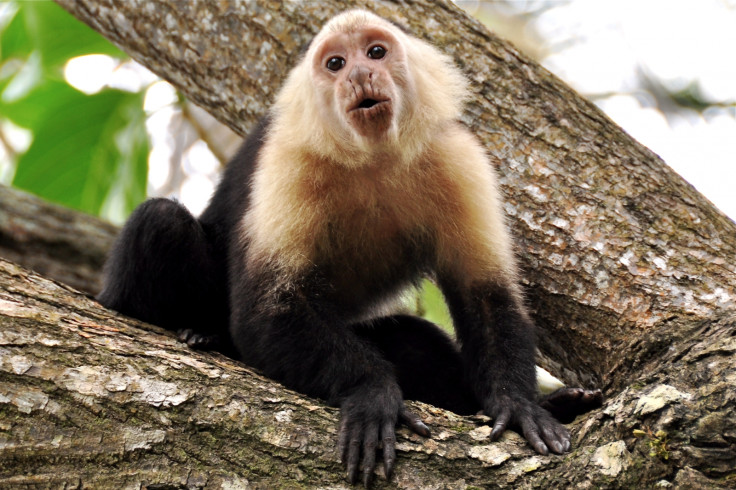Brazilian monkeys have been using stone tools to get at cashews for 700 years
Archaeologists say humans may have been introduced to cashews by watching capuchins.
Brazilian monkeys were using stone tools hundreds, if not thousands, of years ago, and may have inadvertently introduced humans to cashew nuts, scientists have discovered. Archaeological evidence indicates capuchins have been using stones as hand-held hammers to get at food for numerous years.
Researchers from Oxford University and the University of São Paulo in Brazil observed modern-day capuchins living at the Serra da Capivara National Park in northeast Brazil, watching how they created "recognisable cashew processing sites". The technique to get at the cashews involves using a stone as a hammer and another as an anvil to bash open hard foods, like cashew nuts and seeds.
The monkeys used very specific stones for the hammers and anvils. The anvils were heavier than the hammers, while the hammer stones were far heavier than average stones. Smooth, hard quartzite stones were preferred for hammers, while flat sandstones were the anvil of choice. After use, the tools were then left in piles at certain spots.
They then compared these sites to archaeological data to look for similar cashew-extracting factories. The team excavated 69 stones to see if the technique had changed over time, identifying tools from the size and shape of the stone, as well as damage caused by all the pounding. They then worked out how old the stones were through carbon-dating small bits of charcoal found alongside the tools.

Findings, published in the journal Current Biology, showed the tools were at least 600 to 700 years old, making it the oldest evidence of tool use among monkeys outside of Africa. Furthermore, researchers estimate around 100 generations of capuchins would have used this same technique – the stones and damage were extremely similar to the modern-day capuchins.
Lead author Michael Haslam said: "Until now, the only archaeological record of pre-modern, non-human animal tool use comes from a study of three chimpanzee sites in Cote d'Ivoire in Africa, where tools were dated to between 4,300 and 1,300 years old. Here, we have new evidence that suggests monkeys and other primates out of Africa were also using tools for hundreds, possibly thousands of years."
The dates mean monkeys were using stone tools before Europeans arrived in Brazil. Haslam said that, potentially, humans may have been influenced by watching monkeys – and that they could have introduced us to cashews: "This is an exciting, unexplored area of scientific study that may even tell us about the possible influence of monkeys' tool use on human behaviour," he said. "For example, cashew nuts are native to this area of Brazil, and it is possible that the first humans to arrive here learned about this unknown food through watching the monkeys and their primate cashew-processing industry."
© Copyright IBTimes 2024. All rights reserved.






